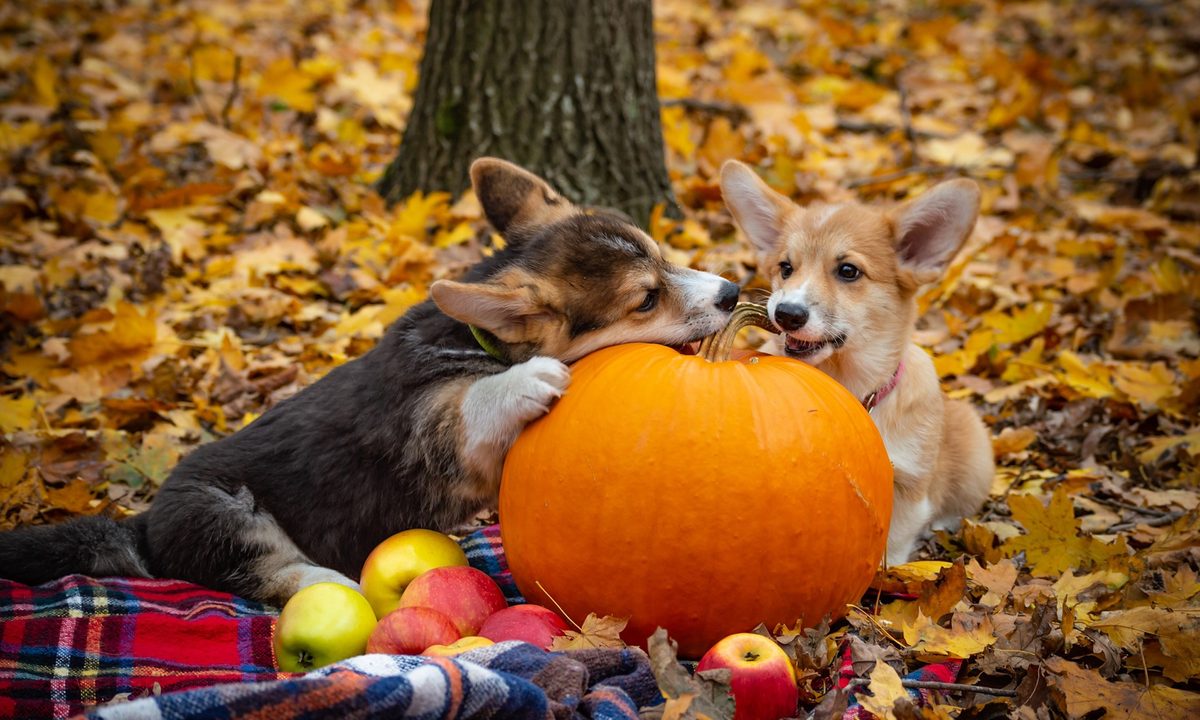Every year, as autumn rolls around — or even during late summer — pumpkin-flavored, everything starts to take over. If you’re a pumpkin-obsessed human (looking at you, latte lovers and candle sniffers), this is great news, but can dogs eat pumpkin?
You’re about to find out! In this article, we’ll get up to date on everything pumpkin: Why it’s good or bad for dogs, how much to feed your furry friend per serving, and even a few ways to prepare this fun autumn food. If you keep a few rules in mind, the possibilities and recipes can be nearly endless. Whether you’re eating to celebrate Halloween, Thanksgiving, or even the weekend, pumpkin can make the perfect addition for your pup. Let’s dive in.
Can dogs eat pumpkin?
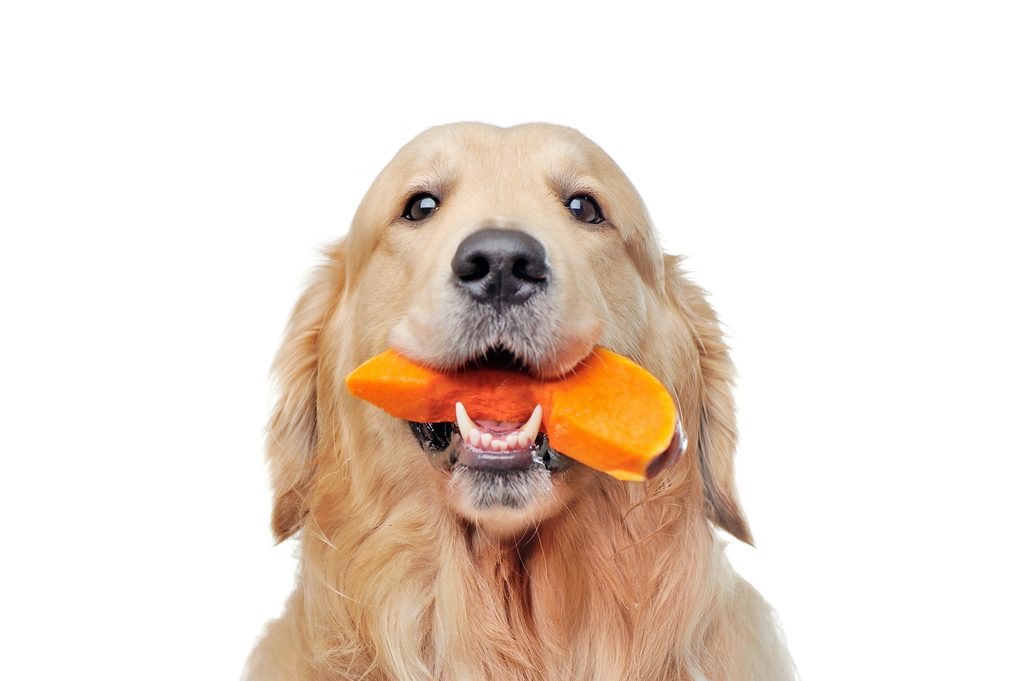
Long story short: yes! Pumpkin can be a great addition to any dog’s diet, and it can even have some health benefits when enjoyed in moderation. Every dog reacts to foods differently, but pumpkin is not a common allergen or irritant for canines. In fact, it’s not unusual to see this ingredient in dog foods thanks to its high fiber count and many vitamins.
Not just any pumpkin is good enough for your furry friend, though. Even though dogs can eat pumpkin raw or cooked, they should not have any added sugar, salt, or seasonal spices that are often used in some of our favorite fall recipes. Most of these ingredients aren’t toxic to dogs, but they’re likely to cause stomach upset.
Canned pumpkin — plain, of course — is the ideal choice. According to the canine nutrition pros at the American Kennel Club (AKC), canned pumpkin contains less water than whole pumpkin and, therefore, a higher concentration of fiber and other valuable nutrients. Don’t be fooled, though: Fresh pumpkin still makes an awesome treat for your dog. Plus, the snack can keep them busy while you carve jack-o’-lanterns!
Health benefits of pumpkin for dogs
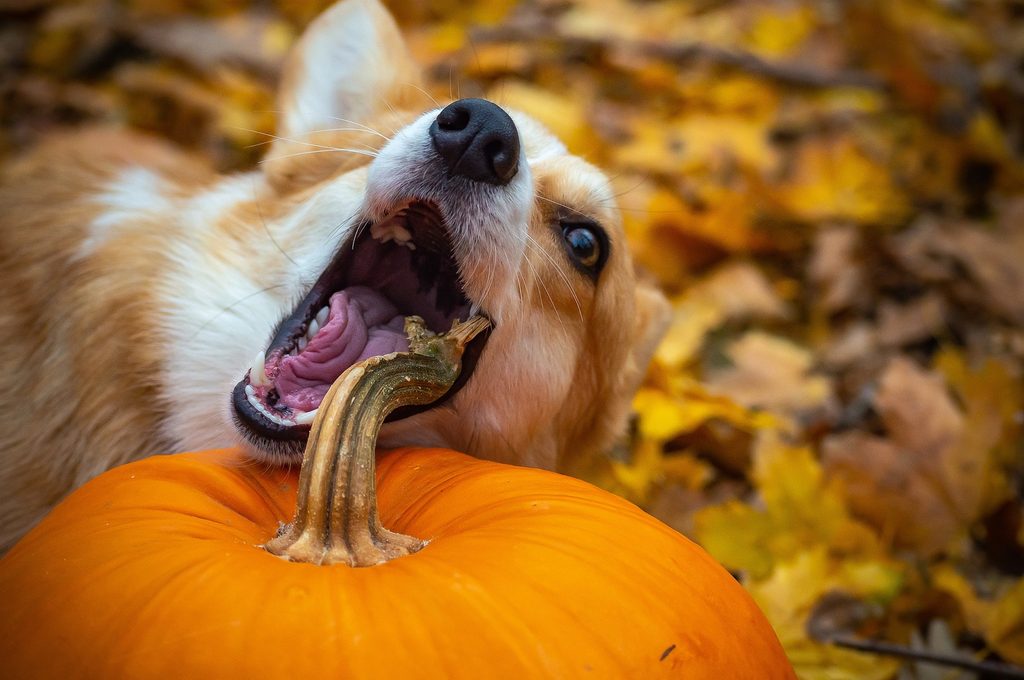
Besides being a delicious dog-friendly snack or mealtime addition, pumpkin has a few key nutrients and health benefits. This gourd is chock-full of soluble fiber, which can regulate bowel movements and contribute to overall intestinal wellness. The fermentation process of fiber in the body also helps to “supply energy to cells, stimulate intestinal sodium and water absorption, and lower the pH level of the large intestines.” (via AKC).
Pumpkin is also a fantastic source of vitamins A, E, and C. Helpful minerals like potassium and iron can also be found here. Potassium — an electrolyte — is vital for heart, nerve, and muscle function, while iron keeps the circulatory system oxygen-rich. Who doesn’t love a healthy treat?
How much pumpkin is too much?
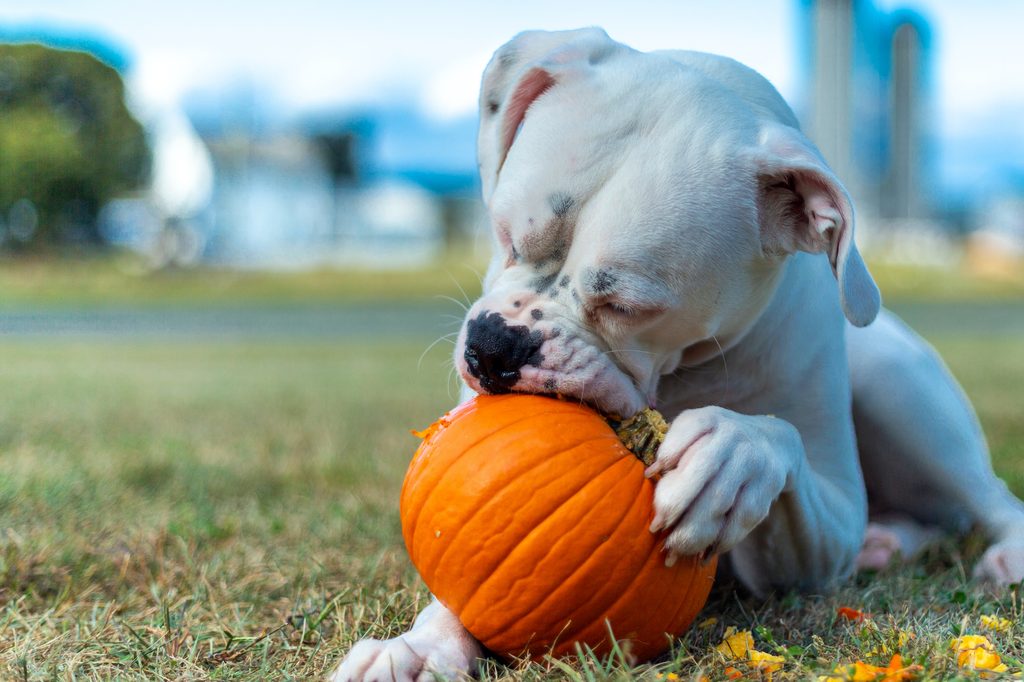
Because pumpkin is so high in fiber, it’s smart not to jump in with a large serving. Instead, start by adding about one tablespoon of canned or powdered pumpkin to your dog’s food. The AKC recommends keeping it at around 1–4 tablespoons (depending on your dog’s size) per meal to help combat constipation, though this is an ideal serving size for pumpkin treats, too.
Giving your dog too much pumpkin can result in diarrhea and intestinal upset, thanks to the fiber. This is why it’s important to start small and to keep an eye on your dog after trying something new. His body will know if he’s had too much of a good thing.
Can dogs eat pumpkin seeds?
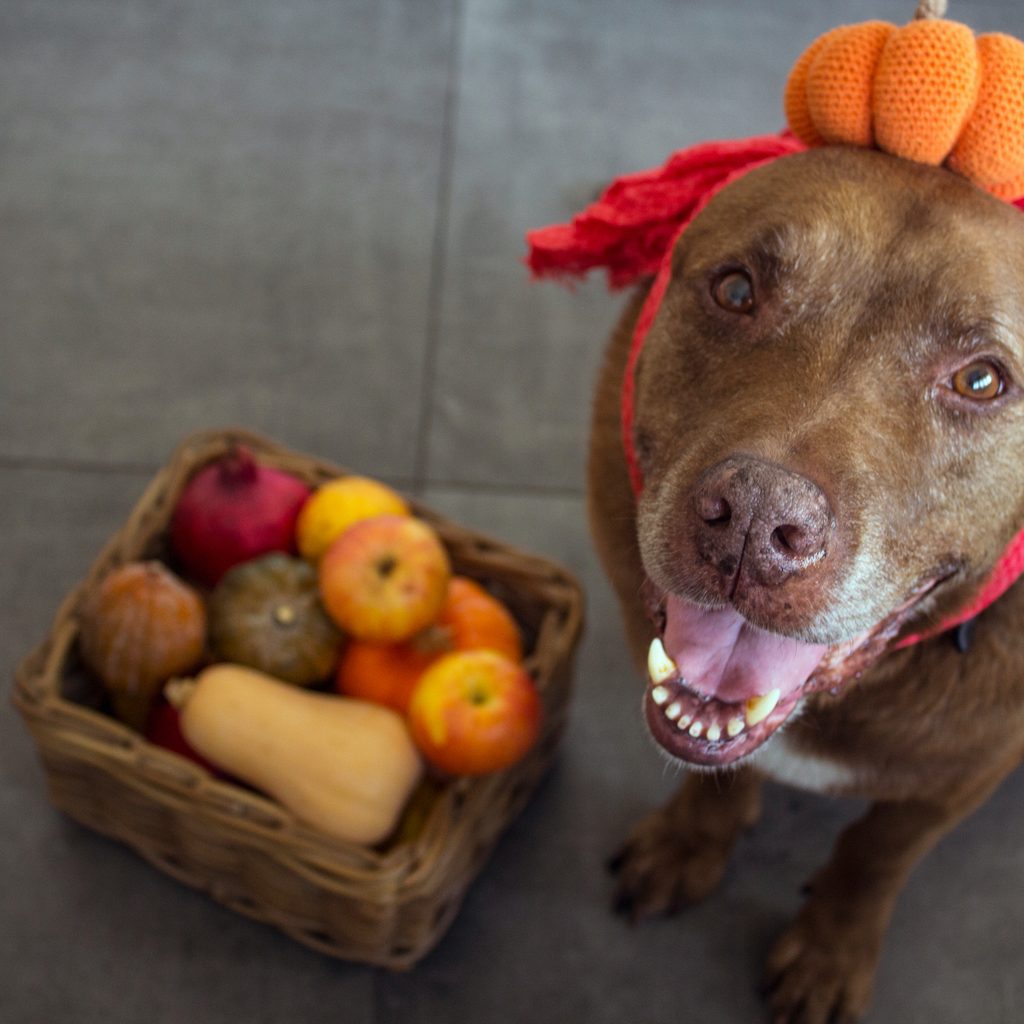
Roasted pumpkin seeds can be a cozy, crunchy snack for us humans, but your dog may be interested in chomping on them, too. While a few plain pumpkin seeds aren’t likely to do any harm, they can be a lot harder for dogs to digest. A few pups can become ill from the chemicals in raw pumpkin seeds and other parts of the plant, but most dogs who consume raw pumpkin seeds are perfectly fine.
Remove the shells from the pumpkin seeds before tossing one to your pup, as the shells can be both a choking hazard and a barrier to digestion. If your pup is known for stomach trouble, you can always try grinding up the pumpkin seeds and using them as a topper for your dog’s meal.
Dr. Sarah J. Wooten, DVM breaks down just how many pumpkin seeds your dog can have. She explained, “Small dogs can safely consume three to five seeds; medium dogs five to 10 seeds; and large dogs 10 to 20 seeds within one day.”
How to serve pumpkin to dogs
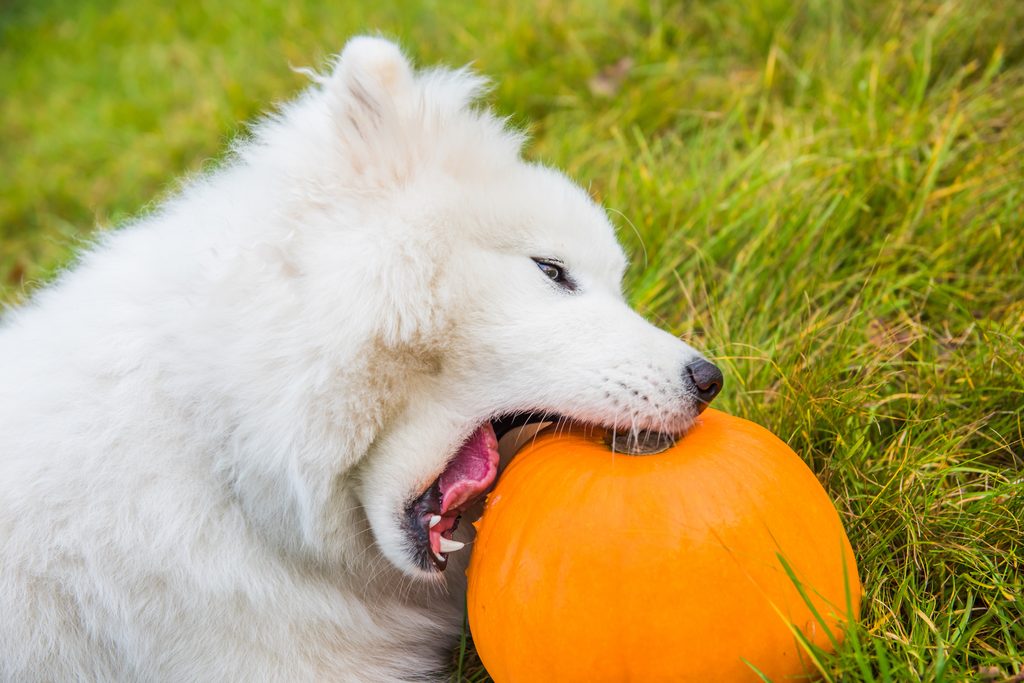
First and foremost, make sure the pumpkin you’re serving is free of spices, sugars, artificial sugars, and salt. If you’re using fresh pumpkins, you can cut up bite-sized pieces to make snacking even easier for your pup.
If your fur baby is a picky eater, you may want to bake your pumpkin into a yummy treat instead of mixing it into his kibble. Consider this another opportunity to get creative in the kitchen! You can whip up a pumpkin-and-frozen yogurt treat for warmer weather, peanut butter and pumpkin dog biscuits, or even banana pumpkin cookies. We won’t tell if you try some for yourself!
There’s something for every palate! For an extra-festive look, try out a pumpkin-shaped cookie cutter or cute serving bowl — not that your pup will pay much mind to that.
Since pumpkin is not only edible but also delicious to dogs, it makes the perfect autumn snack, treat, or meal addition. Its digestive benefits will leave your pup feeling better than before, while its fun texture will leave him so thrilled that he won’t even know he’s eating healthy food.
